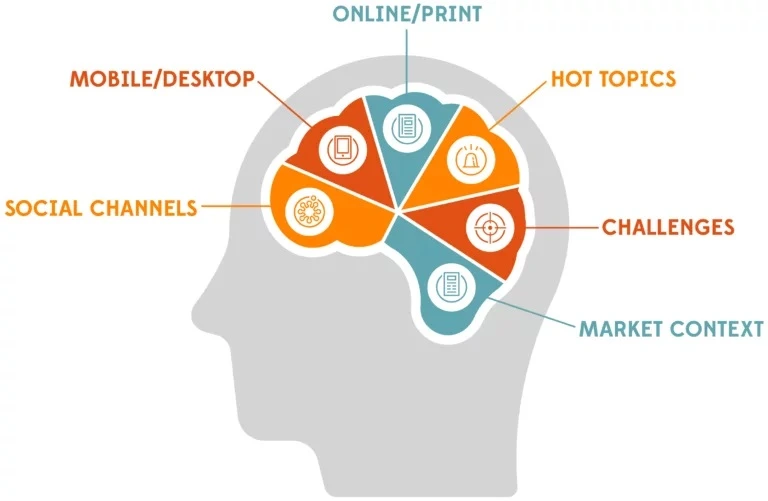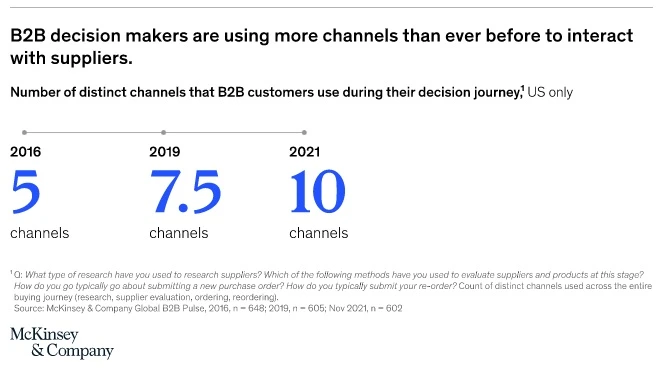How to Make Sense of Audience Insights from Multiple Channels
In today’s customer-focused and rapidly evolving digital marketing landscape, understanding your audience is crucial. Without objective, data-driven audience insights, you won’t be able to deliver the personalized, aligned experiences your customers want.
To maximize the value of your audience insights, you must have a strategy in place to collect, streamline, and standardize insights from multiple channels. That’s what we’ll cover in this article. In the sections that follow, we’ll dive deeper into why audience insights are so important and steps you can take to use yours effectively to drive results.
Quick Takeaways:
- Audience insights include demographic information, online behavior data, purchase history, social media engagement and more.
- Common insights channels include: websites, social media, email, telephone, events, and search engines.
- Buyers use more than 10 channels to engage brands during their purchase journey.
- To effectively manage and use audience insights, they must be centralized, standardized, and analyzed in a unified platform (like your CRM).
What are Audience Insights?
Audience insights include a diverse set of buyer and customer data points that together provide a holistic picture of your target audience. They typically include demographic information, online behavior data, purchase history, social media engagement, and more.

By analyzing these details, marketers gain invaluable insights into customer preferences, pain points, and aspirations, enabling them to craft highly relevant marketing and sales outreach and personalize the buyer/customer experience at every stage.
This capability is a necessity today for companies that want to stay competitive—customers in both the B2B and B2C spaces want to buy from and engage with brands that are in tune with their needs and align their experience accordingly. By collecting audience insights, you can take a data-driven approach to delivering on this expectation.
Audience insights allow you to:
- Build accurate ideal customer profiles (ICPs) and buyer personas
- Create targeted marketing and sales messages for each buyer/customer segment
- Customize content you share on various channels (like email or social media)
- Identify opportunities to align marketing and sales strategies with buyer behaviors
Challenges of Audience Insights from Multiple Channels
The marketing and sales processes are decidedly multichannel in today’s business environment. According to McKinsey, buyers use 10+ channels to interact with brands over the course of their purchase journey.

These channels include:
- Company websites
- Search engines
- Social media platforms
- Automated chat
- Telephone
- In-person and online events
The challenge for companies is this: As marketing avenues continue to expand and audience insights come in from an increasing number of channels, data silos emerge, creating fragmented views of their audiences.
Inconsistent data formats and metrics exacerbate this challenge, making it difficult to compare insights accurately. This disjointed approach can lead to skewed decision-making based on partial and inaccurate information.
Key Strategies to Manage Audience Insights from Multiple Channels
To overcome the challenges posed by fragmented data, adopting a unified approach is essential.
This requires integrating data from various channels into a centralized platform to gain a more holistic view of your audience. Taking this approach both enhances the accuracy of insights and provides a streamlined, single-source understanding of customer behaviors and preferences.
The 5 steps listed below outline how you can transform your audience insights collection and analysis to better manage insights coming in from all of your marketing and sales channels.
1. Centralize Data Collection and Storage
Implementing a centralized data collection and storage system is the foundation of effectively managing audience insights from multiple channels. Your CRM system and data warehouses play a pivotal role in aggregating and centralizing from different sources. Start by ensuring that all audience insights flow into a singular place where you can standardize and analyze it.
2. Normalize and Standardize Data
Standardization involves transforming disparate data into a consistent format, making it easier to compare and analyze. Standardization ensures that metrics are uniform across channels. By adopting standardized frameworks, marketers can effectively identify trends and correlations, leading to more informed decisions.
3. Segment for Deeper Insights
Segmenting your audiences based on shared traits enables you to deliver targeted messaging and more personalized experiences. By integrating insights from various channels, you can create meaningful segments that drive higher engagement and conversion rates.
4. Cross-Channel Analysis
Analyzing data across channels reveals connections that might not be apparent when looking at each source individually. Correlations and patterns discovered through cross-channel analysis provide insights into customer journeys and behaviors, enabling you to optimize your strategies for maximum impact.
5. Utilizing Advanced Analytics Tools
Advanced analytics tools powered by machine learning and AI, are invaluable for uncovering complex insights. These tools can process vast amounts of data quickly and identify trends that might go unnoticed manually. Data visualization aids in presenting audience insights clearly to stakeholders, facilitating data-driven decision-making.
Best Practices for Continuous Improvement
Managing and strategically leveraging audience insights is an iterative process. Take steps such as regular A/B testing and similar experimentation to uncover insights, validate assumptions, and refine your strategies.
Continuously update your audience personas based on new insights to ensure your marketing efforts remain aligned with evolving customer preferences.
Final Thoughts
In an era defined by data abundance, making sense of audience insights from multiple channels is a critical skill for modern marketers.
By adopting a unified approach, implementing advanced analytics tools, and embracing best practices, marketers can navigate the complexities of multichannel insights. The result is not only more effective marketing strategies but also enhanced customer experiences that resonate with audiences on a deeper level.
Televerde offers comprehensive customer success solutions rooted in industry best practices and customized to the unique needs of each client. To learn how we can help you uplevel the impact of your audience insights, contact our team today.


